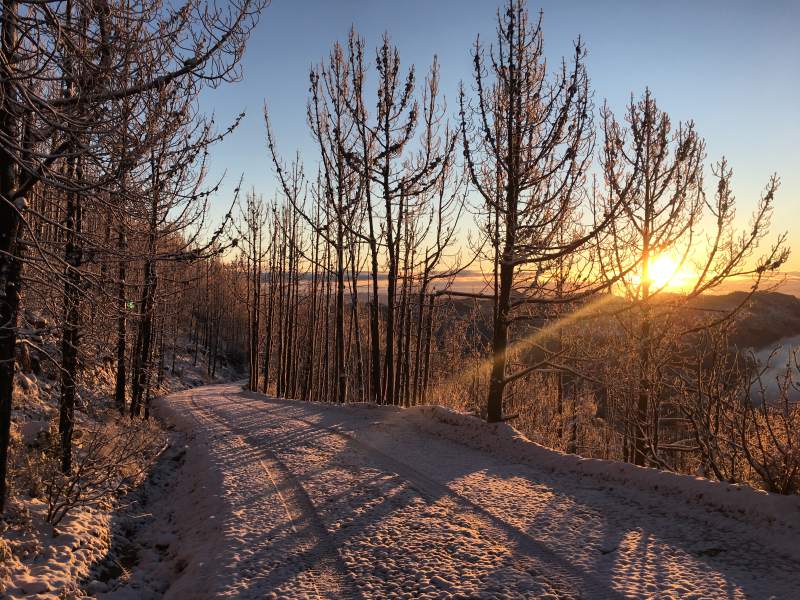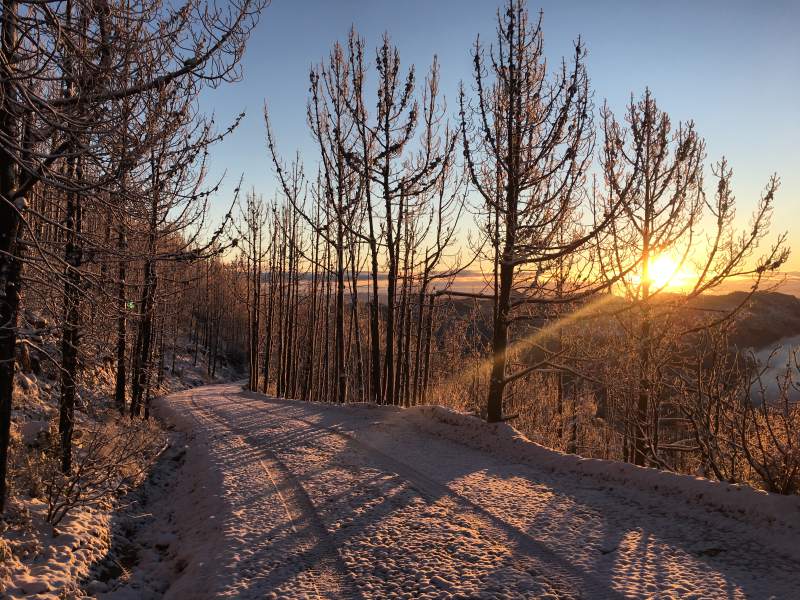The North Bay awoke to rare snowfall Monday, Feb. 4, prompting winter weather advisory warnings throughout Sonoma and Lake County. Local areas above 2,000 feet received between 4-8 inches of snow overnight, along with a mixture of rain and snow that carried on throughout Tuesday.
What is more of a rarity is for snow to fall at street level, such as what we saw in Petaluma and in towns throughout the Bay Area. California has seen some dark times the last couple of years, specifically with the outbreak of various devastating wildfires.
Last year ended with the catastrophic blazes in Paradise, California and, at the dawn of 2019, unusual snowfall that Sonoma County has not seen in approximately 10 years. It begs the question of whether or not there is any evidence that would point to climate change as partially to blame for California’s recent forecasts.
“It snowed about three times within the last 45 years, we typically get snow on top of Mount Saint Helena and Cobb Mountain, but that’s normal at higher elevations,” said Art Hayssen, meteorology professor at the Santa Rosa Junior College. “What’s unusual is street level snow.”
Authorities shut down Sonoma Mountain Road in Petaluma on Feb. 5, due to the weather advisories for the North, East and South Bay areas. The National Weather Service (NWS) issued weather advisory warnings on Monday afternoon, reporting that “the last time snow dropped to 1,000 feet was 2011.”
Hayssen said that “within the last 45-50 years, Sonoma County has seen snow about once per decade, where it actually snowed down to street levels in Santa Rosa and Rohnert Park.”
Hayssen discusses what the expected winter norms are for Sonoma County, especially that global warming continues to be on the rise. It is important to note that, despite the concerning temperature rise and melting ice in the greater Arctic areas overtime, changes in weather on a regional level are not characteristics that can be directly correlated with global warming in and of itself. There are just too many variables that account for climate change and Hayssen admits it is even difficult for scientists to pinpoint what directly causes certain anomalies.
Snowfall blankets Geyser Road east of Cloverdale on Tuesday, Feb. 5.
“On a larger scale, our weather is changing, and it is in my opinion due to human activity and our influence on this earth,” said Hayssen when asked if there are any connections directly linking climate change with our inconsistent California weather patterns. “There’s irrefutable evidence that we’re changing the climate of the world, we just don’t know how it’s going to affect places regionally.”
It is, however, great news for snow sport hobbyists eager to hit the resort in South Lake Tahoe, where there have been reports of 14-28 inches of snow and a winter storm warning issued on Feb 8.
Perhaps this year’s snow is not as unusual as we may think. Those who have grown up in this area may not realize that, in the grand scale of time, 10 years is not that long of a segment. California is well known for its Mediterranean-like climate and mild winters due, in large part, to living so close to the sea. The truth is, our winters just are not cold enough. We live next to the world’s largest ocean whose continental effect accounts for little fluctuation of temperatures along the coast.
In contrast, large bodies of water actually store more heat than land does, which have a tremendous influence on our location in Sonoma County, although we have experienced colder weather in the past.
“What we do know is that the coldest temperatures we’ve had near sea level in Santa Rosa and Rohnert Park was the winter of 1989 and 1990 where we saw single digit temperatures of 8 and 9 degrees Fahrenheit,” Hayssen said. “We haven’t even come close to duplicating those temperatures.”





![[Both photos courtesy of sonoma.edu]
Ming-Ting Mike Lee stepped in as the new SSU president following Sakakis resignation in July 2022](https://sonomastatestar.com/wp-content/uploads/2024/04/CC4520AB-22A7-41B2-9F6F-2A2D5F76A28C-1200x1200.jpeg)



























